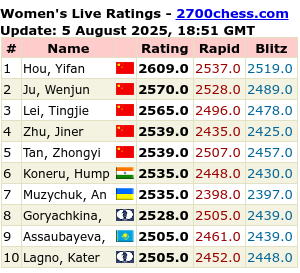There are occasions when checking a game that I am surprised at what I see in terms of threats and tactics.
Other times, it is shameful and even de-moralising, to see how much is missed.
Case in point below...
Move 12, plenty of time in a rapid game and I spend more than a minute to end up not seeing the obvious Qxd4.
I'm not sure that a longer time control would have revealed it to me, since its clear that I am not thinking of the correct approach here, despite the fact that e5 was played on the previous move to attack and (sort of) pin the knight to the queen, so I already have an "attack the knight" thought.
So how come the switch from attack the knight with a pawn, does not switch to "attack with the Queen"?
Has the attack by the Queen on the King over-ridden all other thoughts ? Has it pushed this king-threat to the top of the priority list and blocked anything apart from 'defend the pawn' or 'prevent the check' ?
 |
| 12. Qd4 |


2 comments:
Thanks for sharing that. I've noticed this type of failure of board sight all too often in my own games, although it's clearly much more common at fast time controls, or after the brain has been exhausted later in the game. Normally if I have 3 mins/move or so I'll (finally) pick up on the "obvious" possibility. I call it a failure of board sight because the player is simply missing the possibility of a piece being able to move from one location to another, rather than it being the result of a failure of calculation.
In my own thought process, I'd ascribe this phenomenon as the result of a rigidity of assumptions - that only certain possibilities still exist within a position. In another example, during a recent tournament game I missed a rather obvious pxp capture that I overlooked because it was from a "static" central structure - at least static in my thinking at the time.
To combat this, I do think a fundamental CCT (checks, captures, threats) scan each move can help, although it may seem "beneath" a player to do so, instead of jumping to more complex (but flawed) thought processes immediately.
@chessadmin. My apologies for the long delay in publishing your comment, certainly not ignoring you !
I agree with you, this is much more common at fast time controls and/or when having a fixed mindset be that temporary or permanent.
Having a thought process ( or even a move process ) can help to reduce the likelihood of this happening. The basic one you mention of Checks, Captures, Threats (CCT) is certainly better than nothing.
In recent months I have made similar mistakes, however, I feel that I have reduced such errors, not by adopting a move process, but rather by adopting some more structured training using the "Steps Method".
I didn't start from Step 1, or even Step 2, but rather from the Step 2 Mixed workbook : 700 puzzles with no theme attached. I followed this with the "Visualisation" workbook", which, as it the name implies are puzzles ( of varying types ) that are for stimulating your visualisation in various ways.
These definitely seem to have improved my ability to "see", and together with the regular practice, have reduced my error-rate.
I did find a book describing a thought process for move-selection ( Per Ostman - Your Best Move) although I have yet to finish it or decide if it fits me.
Post a Comment